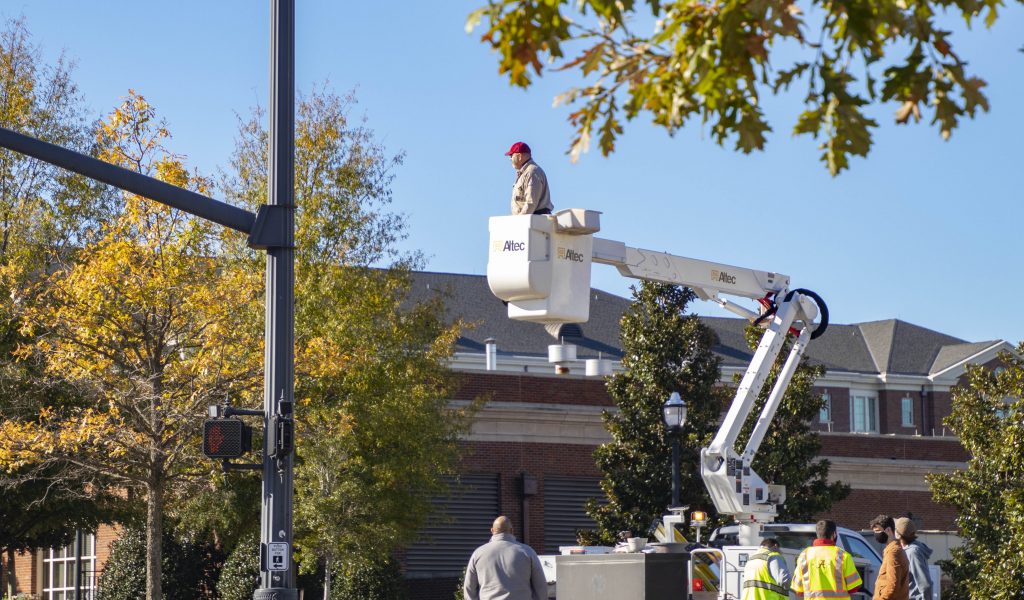January 31, 2019
TUSCALOOSA, Ala. — An analysis of Alabama’s roads and bridges by researchers at The University of Alabama provides future scenarios for the state of transportation infrastructure that vary based on funding.
The report, “Addressing Alabama’s Transportation Infrastructure: Roads and Bridges,” informs state leaders about the impact of potential approaches to funding the state’s roads and bridges.
“The Alabama economy depends on a functioning network of roads and bridges,” said Dr. Shashi Nambisan, executive director of the Alabama Transportation Institute, or ATI. “Today we have increasing population meeting aging infrastructure, congestion, safety concerns and stagnant funding. This puts elected officials and decision makers in a difficult position. We’ve put together some options for a path forward.”
The report is available free online for interested individuals and organizations.
Researchers developed a set of seven scenarios set in the year 2040 for consideration by decision makers that range from continuing current practices and policies to pursuing an optimal path that considers the needs of different regions across of the state.
The report finds the state’s transportation network needs between $600 million and $800 million annually for the next 20 years, depending on the scenario.
“We were asked to document conditions now and in 2040 to support decision makers across the state,” Nambisan said. “We have estimated the funding needed to address various scenarios. We are not advocating for any particular method of meeting those needs financially.”
Population, the number of registered vehicles and vehicle miles traveled are increasing at a more rapid rate than the system has been adding capacity to accommodate them. From 1990 to 2015, for instance, Alabama’s population increased 20 percent, registered vehicles increased 46 percent and vehicle miles traveled increased 57 percent, while the number of lane-miles only increased 14 percent.
In the year 2020, 53 percent of the bridges across Alabama will be 50 years or older; typically bridges have been designed to serve 50 to 70 years.
The safety of drivers and passengers has also been significantly affected. In 2016, traffic crashes across the state resulted in about 1,100 fatalities, about a 27 percent increase from the preceding year. The societal economic impacts of traffic crashes are estimated to be in excess of $18 billion in 2016.
Failing to invest in the state’s transportation system will be costly, too, the report finds.
“There is a cost associated with doing nothing,” said Steven Polunsky, director of the Alabama Transportation Policy Research Center at UA and contributor to the report. “We’ll pay for it in weakened economic competitiveness, diminished economic productivity, increased vehicle maintenance and operating costs, and impaired access to education, employment, healthcare and social-recreational opportunities.”
According to the report, Alabama’s methods of paying for transportation infrastructure have lost, and continue to lose, purchasing power because of inflation, increasing fuel efficiency and fleet changes that reduce the number of vehicles paying into the system, erasing the additional purchasing power derived from the last fuel tax increase of 5 cents per gallon in 1992.
“We have developed a network of roads and bridges that has served us well, but the purchasing power of transportation funding has eroded over time,” Nambisan said. “For us to sustain the quality of lives of Alabamians and maintain economic competitiveness with Southeastern states, we must find ways to invest not only to maintain our transportation system, but to enhance it as well.”
ATI serves as a planning, research and policy resource to advance a 21st century transportation system, bringing together nationally recognized research and development industry professionals seeking innovative solutions to the challenges of building and maintaining a safe, effective and efficient transportation system.
A copy of the report is available at ovpred.ua.edu/files/2019/01/Alabama-2040-Report-ATPRC-2019-001.pdf.
Infrastructure, Research